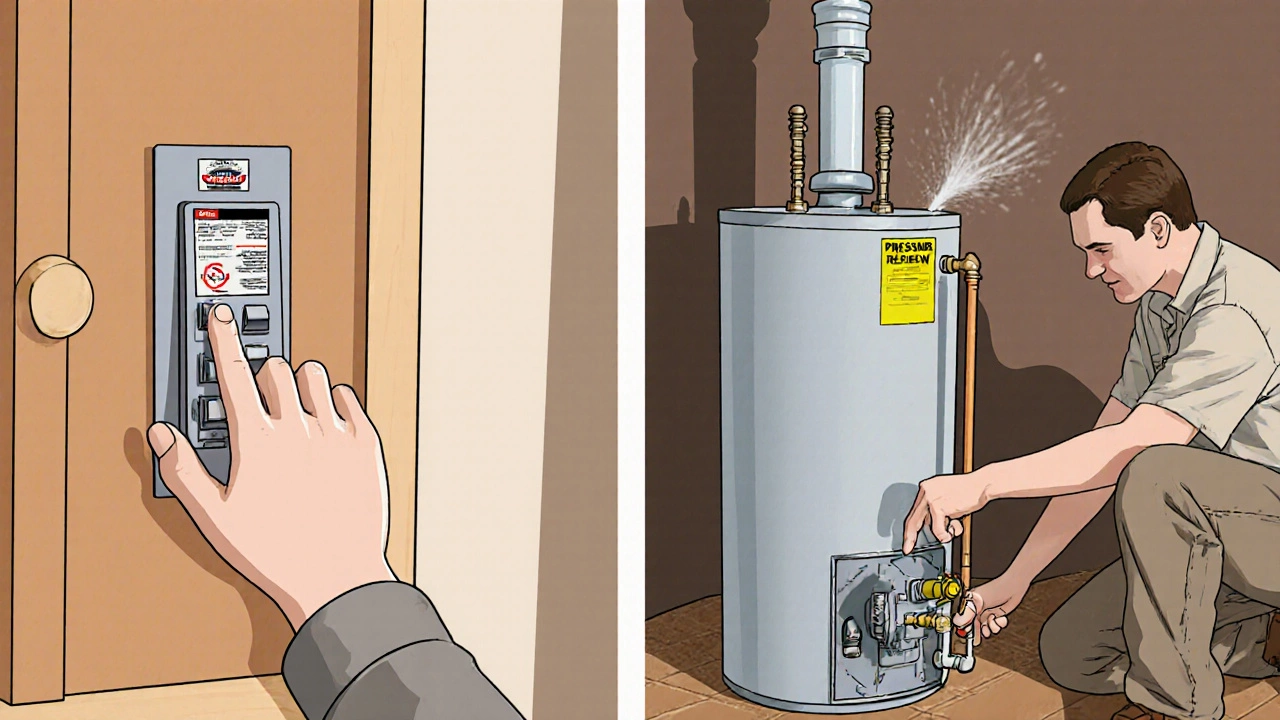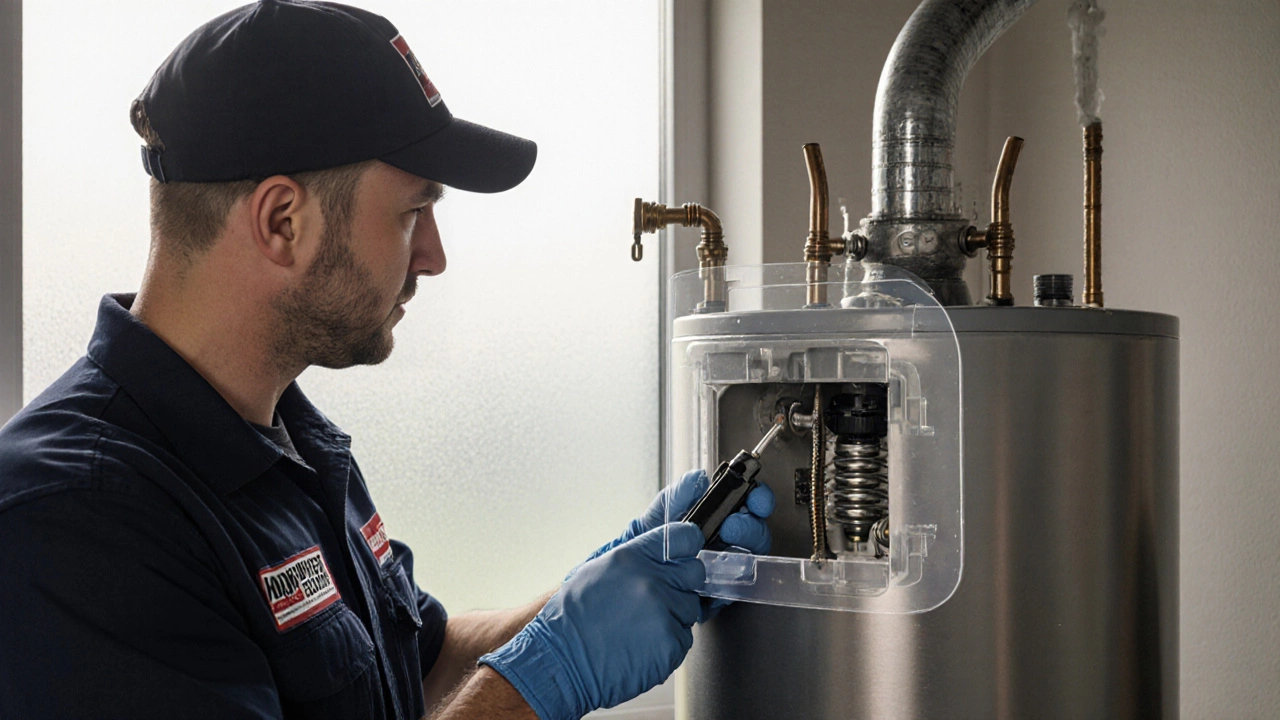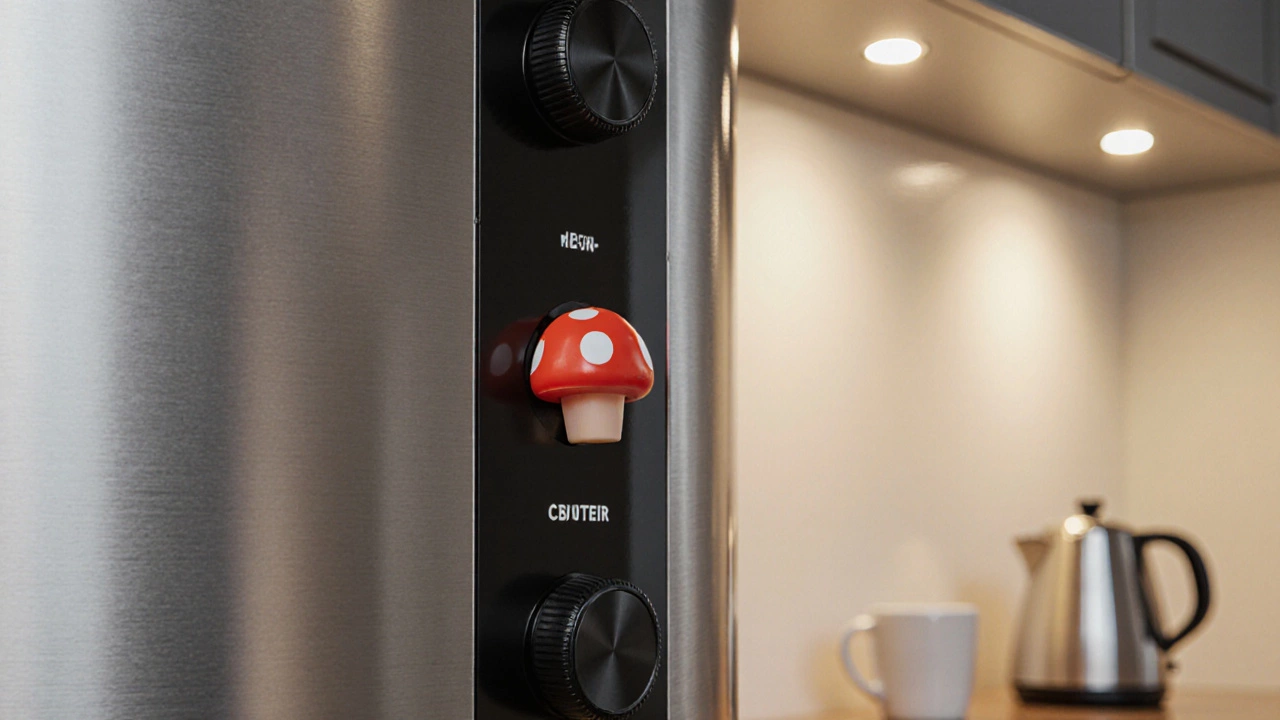Water Heater Reset Safety Checker
Answer these questions to determine if it's safe to press the reset button on your water heater. Based on the article content, the reset button should only be pressed after performing specific safety checks.
Water Heater is a household appliance that heats and stores water for showers, cooking, and cleaning. Most modern units include a reset button designed to shut off the heating element or gas burner when a fault is detected.
What the reset button on water heater actually does
The reset button is part of the high‑limit safety circuit. When temperature or pressure exceeds safe limits, a high‑limit switch (also called a thermal cut‑off) trips, cutting power to the electric heating element or shutting the gas burner. The reset button simply restores the circuit so the heater can try to heat again.
When it’s appropriate to press the reset button
- The water temperature has dropped and the heater is no longer heating.
- The internal thermostat shows a normal reading after cooling down.
- No visible leaks, strange noises, or flashing error codes remain on the control panel.
If any of these conditions are not met, you should investigate further before resetting.
Safety checks you should run first
- Turn off power or gas supply. For electric heaters, switch off the breaker at the consumer unit. For gas models, close the gas valve.
- Inspect the pressure relief valve. Pressure relief valve releases excess pressure to prevent explosions. Make sure it isn’t stuck open or leaking.
- Check for water leaks around the tank, connections, and the vent pipe. A leak can cause the heater to overheat.
- Feel the thermostat (if accessible). The thermostat regulates the water temperature should be at room temperature after the unit has cooled.
Only after these checks clear should you consider resetting.

Step‑by‑step: How to safely press the reset button
- Locate the reset button. It is usually a red or black mushroom‑shaped button near the thermostat or inside the access panel.
- Press firmly once. You should feel a slight click as the spring releases.
- Leave the button released; do not hold it down. Holding the button can damage the internal switch.
- Restore power or gas supply.
- Watch the heater for a few minutes. The water should begin heating and the reset button should stay out.
- If the button trips again within 5‑10 minutes, turn the power off and repeat the safety checks.
Why the reset button might trip repeatedly
Frequent trips usually point to an underlying fault:
- Scaling on the heating element. Mineral buildup reduces heat transfer, causing the element to overheat.
- Faulty thermostat. A stuck thermostat can send continuous heat signals.
- Blocked vent or combustion air (gas models). Insufficient airflow raises temperature.
- Water pressure too high. The pressure relief valve may open, cutting power.
- Electrical issues. Loose wiring or a failing circuit breaker can cause false trips.
Addressing the root cause is essential; otherwise you’ll be resetting a problem that never goes away.

When to call a professional
If you encounter any of the following, stop and call a licensed plumber or heating technician:
- Repeated trips after you’ve performed all safety checks.
- Visible rust, corrosion, or water seeping from the tank.
- Unusual buzzing, popping sounds, or a smell of gas.
- The heater is more than 10‑12 years old and showing frequent issues.
Technicians can test the high‑limit switch, replace a worn electric heating element, or service the gas burner safely.
Preventive maintenance tips to avoid reset trips
- Flush the tank once a year to remove mineral deposits.
- Test the pressure relief valve annually by lifting its lever; it should release a burst of water and reseat.
- Inspect the anode rod (if your model has one) and replace it every 2‑3 years.
- Keep the area around the heater clean and free of debris to ensure proper ventilation.
- Schedule a professional inspection every 3‑4 years for gas‑fired units.
These simple steps keep the internal safety circuit happy, meaning you’ll rarely need to hit that reset button.
Quick checklist before you press reset
- Power or gas supply turned off?
- Pressure relief valve clear?
- No visible leaks?
- Thermostat cool to the touch?
- Access panel reopened and dry?
If you can answer “yes” to every item, pressing the reset button is generally safe.
What does the reset button do on a water heater?
It resets the high‑limit safety circuit that shuts off the heating element or gas burner when temperature or pressure gets too high.
Is it safe to press the reset button if the heater is still warm?
Only after you turn off the power or gas, check for leaks, and verify the pressure relief valve is working. If the heater feels unusually hot, let it cool first.
Why does the reset button keep tripping?
Common causes are scaling on the heating element, a faulty thermostat, blocked ventilation, high water pressure, or electrical problems. Fix the root cause before resetting again.
Can I replace the reset button myself?
The button itself is cheap, but it’s attached to the high‑limit switch. If you’re comfortable working with electricity or gas, you can replace it, but many homeowners prefer a qualified technician.
How often should I flush my water heater?
Once a year in areas with hard water, and every two years where water is softer. Flushing removes mineral buildup that often triggers the reset circuit.


